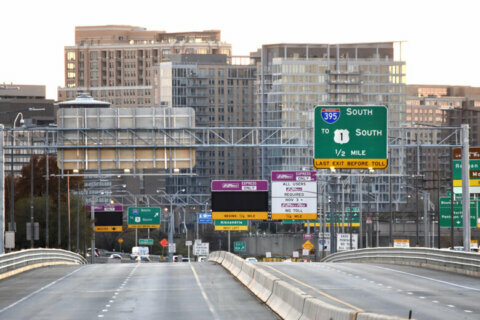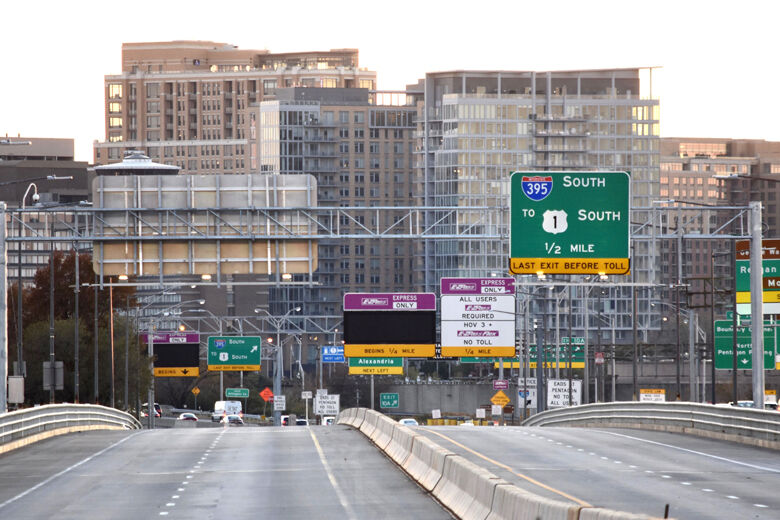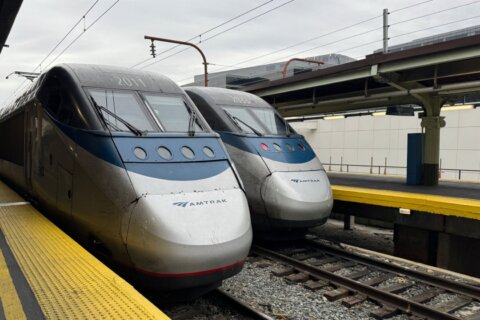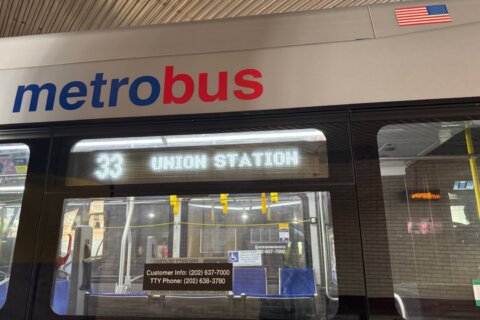
New financial disclosures are shedding light on the early months of tolling and activity on Interstate 395 in Virginia.
Transurban, the I-395 Express Lanes operator, folded the I-395 data into existing I-95 Express Lanes calculations in its report to investors on the second half of 2019. But the Australia-based company describes the I-395 lanes traffic numbers and revenue as “in line with expectations.”
Overall, toll revenue on the I-95/I-395 corridor was up 13.6% in the second half of 2019 compared to the same period a year earlier.
According to a footnote in the investor presentation, revenue only tied to the I-95 Express Lanes grew 11.4%, so the remainder of the increase would be tied to the first month and a half of 395 tolling.
After transit payments to Virginia, Transurban took in a total of $58 million in revenue on the I-95/I-395 corridor in the second half of 2019. After financing and other costs, the company says it made about $17 million.
The I-395 HOV lanes, where rules only applied at rush hour on weekdays, were converted to 24/7 HOV or toll lanes Nov. 17. The tolling rules include the entire stretch to the 14th Street Bridge for northbound drivers.
Shift to 24/7 HOV or toll lanes
That final stretch of the toll lanes northbound is one of the most common trips, Transurban spokesman Mike McGurk said, with heavy travel from both the regular lanes and S. Eads Street over the Potomac.
In the past, those trips only technically required following HOV rules at rush hour. Now, even HOV trips require an E-ZPass Flex to avoid fees at any time, which likely keeps more cars in the regular lanes than in the past.
For southbound drivers, the rules apply beginning at Eads Street next to the Pentagon.
The average price of tolls paid on I-395 and the prices based on time of day are not broken out in the financial report, but the average toll paid for any tolled trip along the I-95 Express Lanes and I-395 Express Lanes was $9.32, the financial report said.
In October, November and December 2019, Transurban recorded about 57,000 average weekday trips. That compares to 49,000 trips a year earlier.
About a quarter of this fall’s trips involved at least a segment of the toll lanes on both I-395 and I-95.
Transurban highlights the toll lanes as saving time for users, with vehicles in the lanes at the height of rush hour making a trip in about eight minutes that takes drivers sitting in the regular lanes about 26 minutes.
The company also controls the I-495 Express Lanes on the Beltway, where toll revenue was up 3.3% in October, November and December and usage was up about 2%. The average Beltway toll paid is $5.67.
For the 495 Express Lanes, the company recorded $21 million in toll revenue in the fourth quarter of 2019 but tracked a $9 million net loss for the last half of 2019 after accounting for financing and other costs.
More toll lanes coming
The I-95 Express Lanes are also being extended south near Fredericksburg as part of a project expected to open by the end of 2022.
Transurban is also working on plans to extend the I-495 Express Lanes north toward the Legion Bridge by around 2024, and the company is interested in bidding for toll lanes on the Beltway and I-270 in Maryland.
The existing toll lanes are also set to host more high-tech tests in the coming year including work on autonomous work zone protection vehicles, other self-driving technology, and figuring out how the toll system would work if the gas tax is replaced by a general vehicle miles traveled fee.
EDITOR’S NOTE: An earlier version of this story mistakenly displayed Australian dollar figures as American dollar figures.








